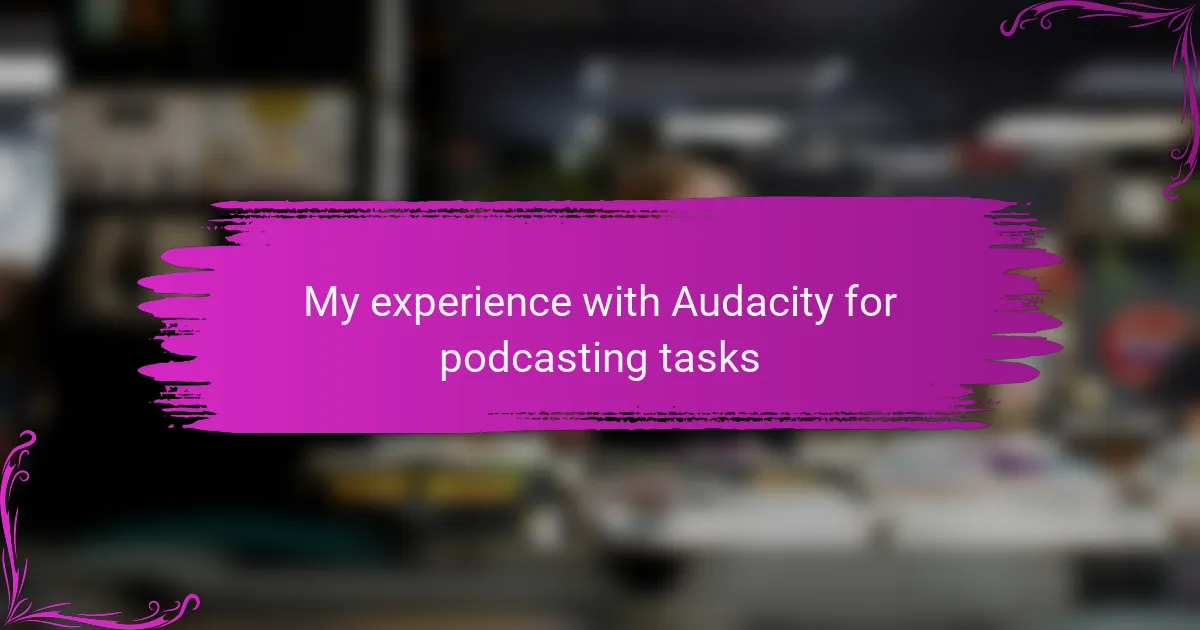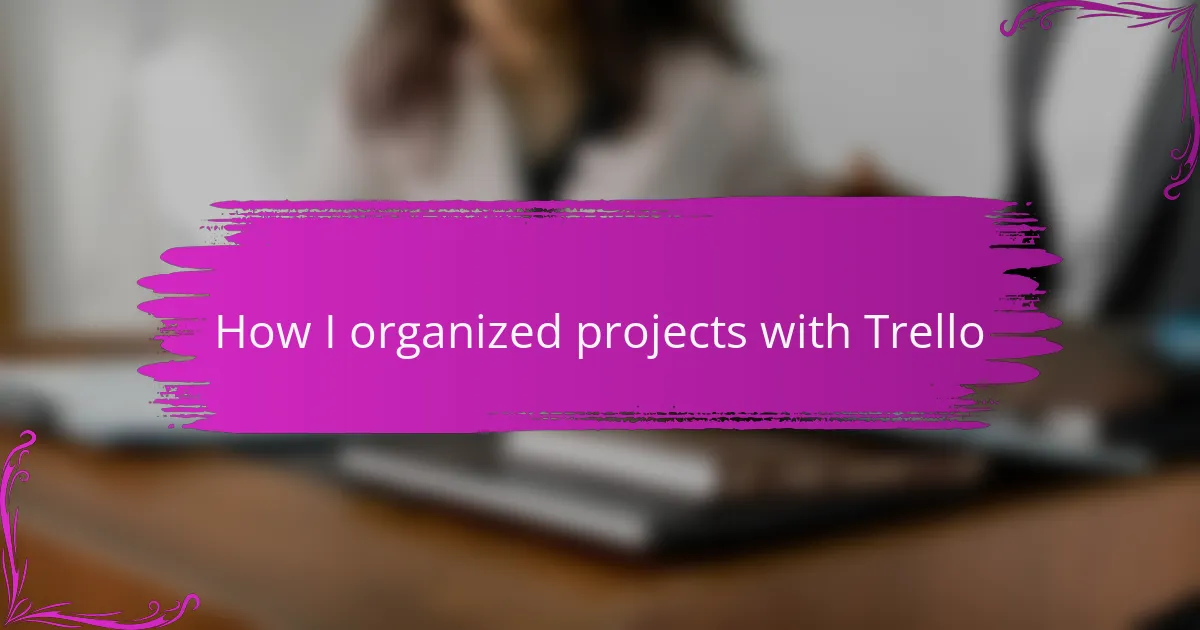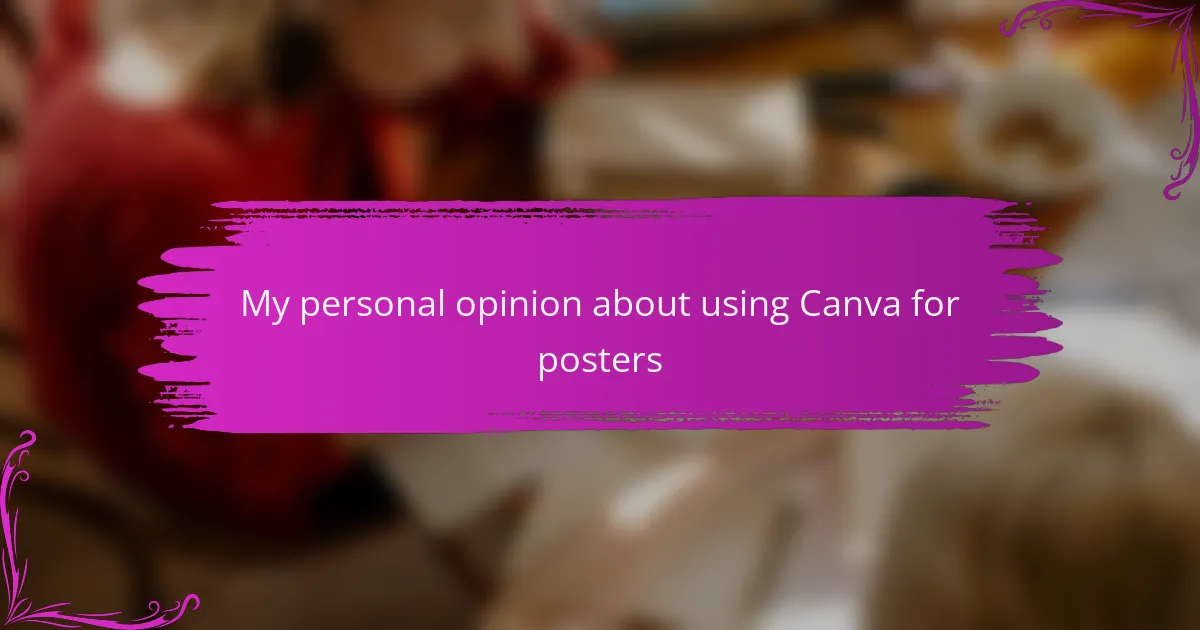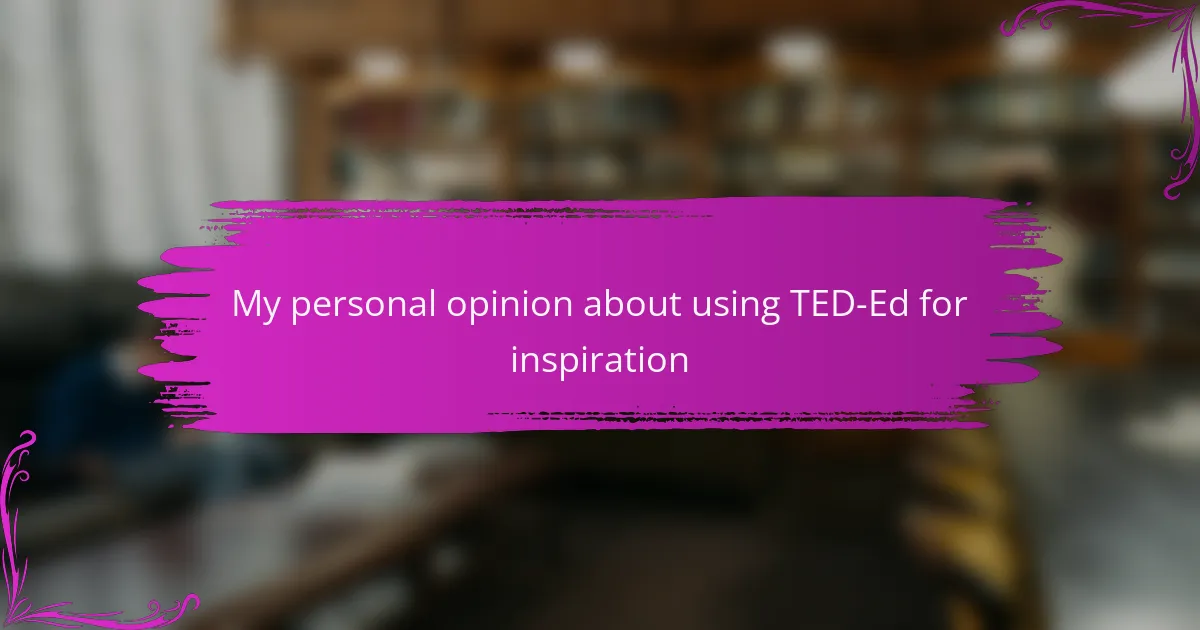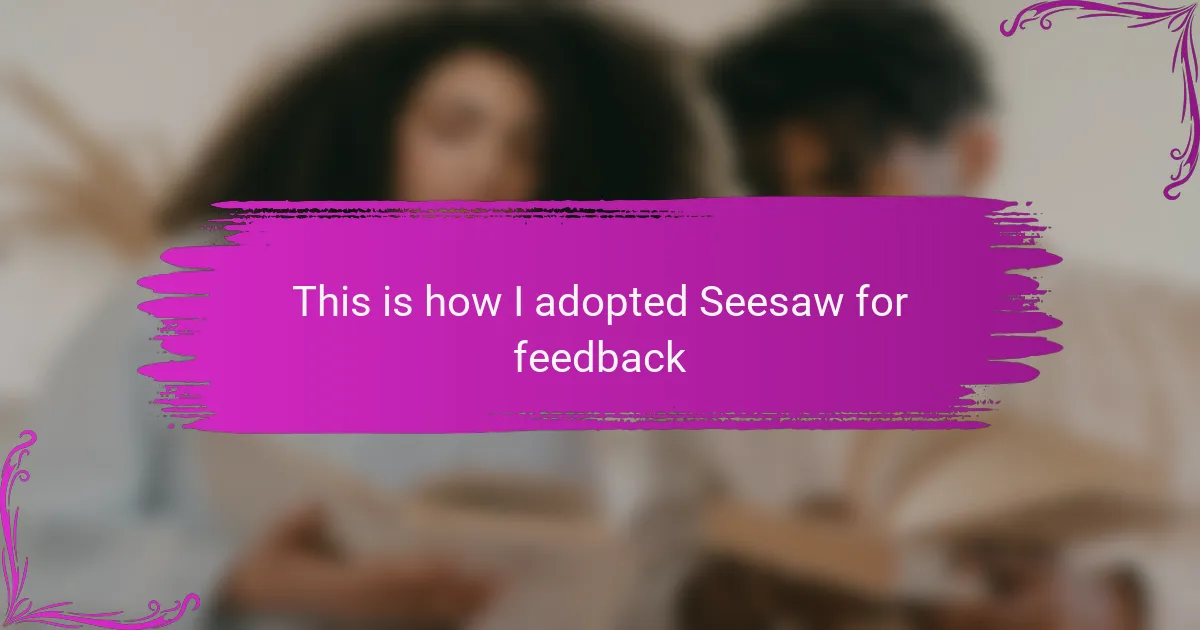Key takeaways
- Audacity is a user-friendly podcasting software that offers powerful editing tools and a straightforward interface, making it accessible for beginners.
- Key features include multi-track editing, a variety of audio effects, and the ability to export in multiple formats, enhancing the overall quality of podcast episodes.
- Effective audio editing techniques, such as using silence and normalization, can significantly improve the clarity and professionalism of podcasts.
- Taking time to familiarize oneself with the software and practicing keyboard shortcuts can streamline the editing process and boost creativity.
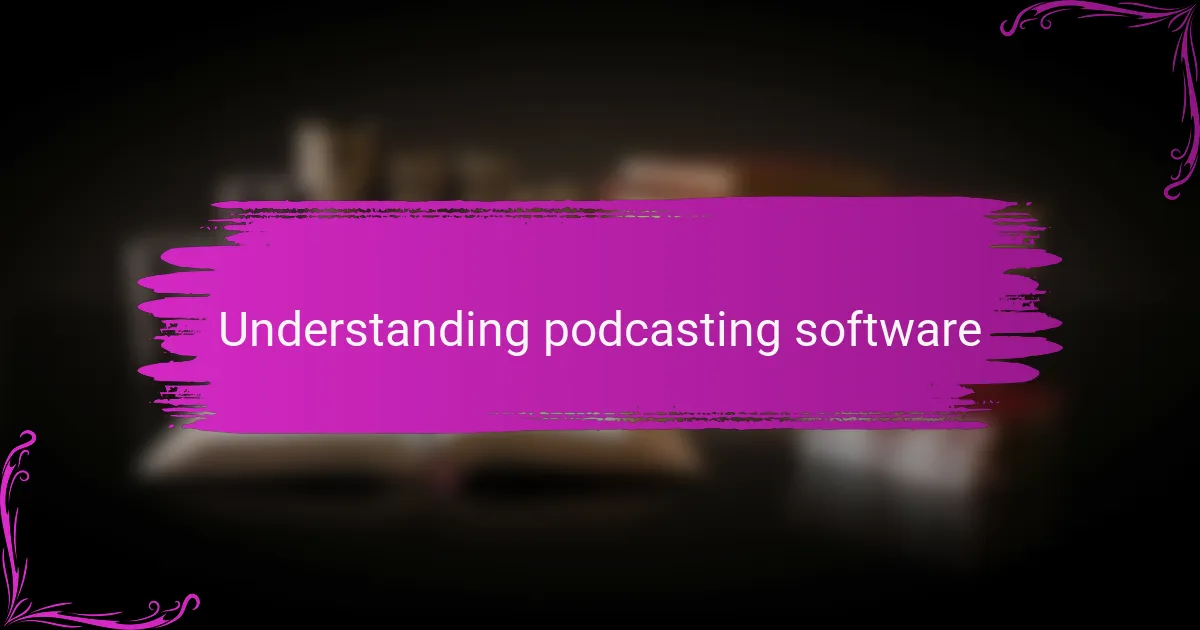
Understanding podcasting software
Podcasting software plays a crucial role in transforming ideas into engaging audio experiences. I remember the first time I opened Audacity; I was amazed by how user-friendly it was yet packed with powerful tools for editing. Isn’t it fascinating how the right software can bring your voice to life?
Every podcaster has different needs, so understanding what features matter to you is essential. For example, I found the multi-track editing capability invaluable for layering sounds and music. Have you ever struggled with background noise in recordings? Adjusting levels in Audacity can turn a rough take into something polished and professional.
As I dove deeper into the software, I discovered the wealth of effects and plugins available. Honestly, it felt like unlocking a treasure chest of creativity! Trying out different sound manipulations made my podcasting journey not just a task but a thrilling adventure. It’s engaging to see how one tool can enhance storytelling and connect more deeply with listeners.
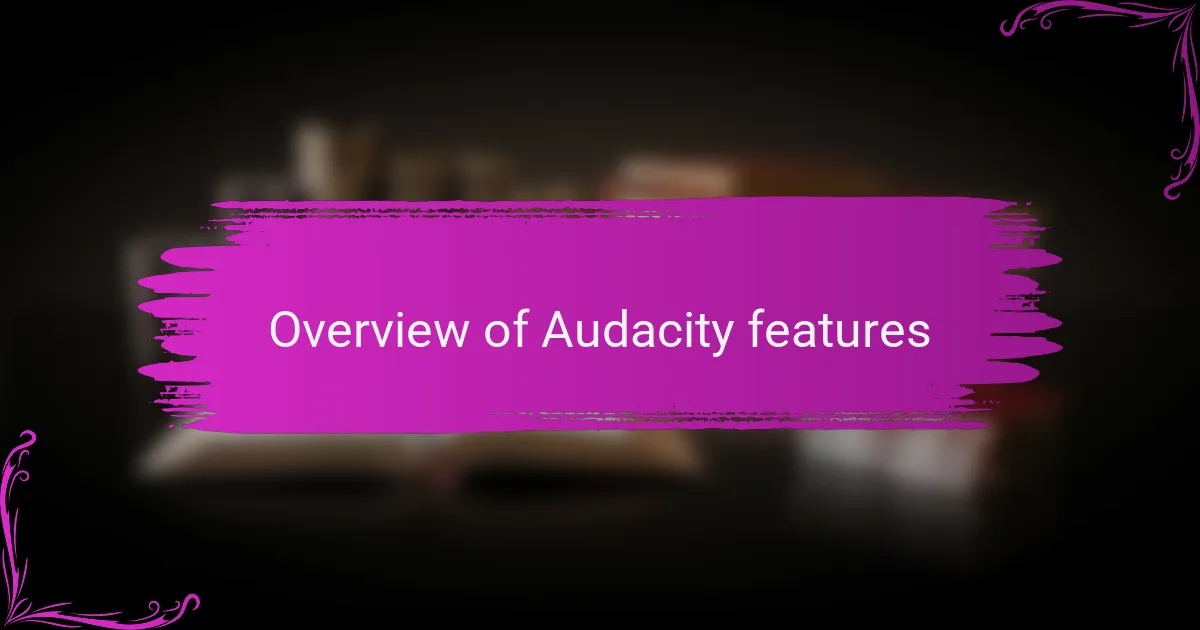
Overview of Audacity features
One of the standout features of Audacity is its intuitive interface, which I found to be incredibly approachable even for a novice like me. The layout is straightforward, allowing easy access to essential tools such as playback controls and editing options. Have you ever felt overwhelmed by software complexity? With Audacity, I never experienced that; instead, I felt empowered to explore my creativity.
Another feature I appreciate is the array of effects, like reverb and compression, which can dramatically improve audio quality. I remember applying a bit of compression to my voice for the first time, and the clarity it brought was astonishing. It made me realize how much even subtle adjustments can elevate a podcast episode. Doesn’t it feel rewarding to hear your hard work pay off in enhanced audio?
The ability to export in various formats is another aspect that really stood out to me. Whether I wanted to save a file as MP3 or WAV, Audacity offered flexible options that suited my needs perfectly. This versatility has made sharing my episodes seamlessly easy, allowing my audience to listen regardless of their device. Isn’t it great when technology simplifies our sharing efforts while enhancing our creative outputs?
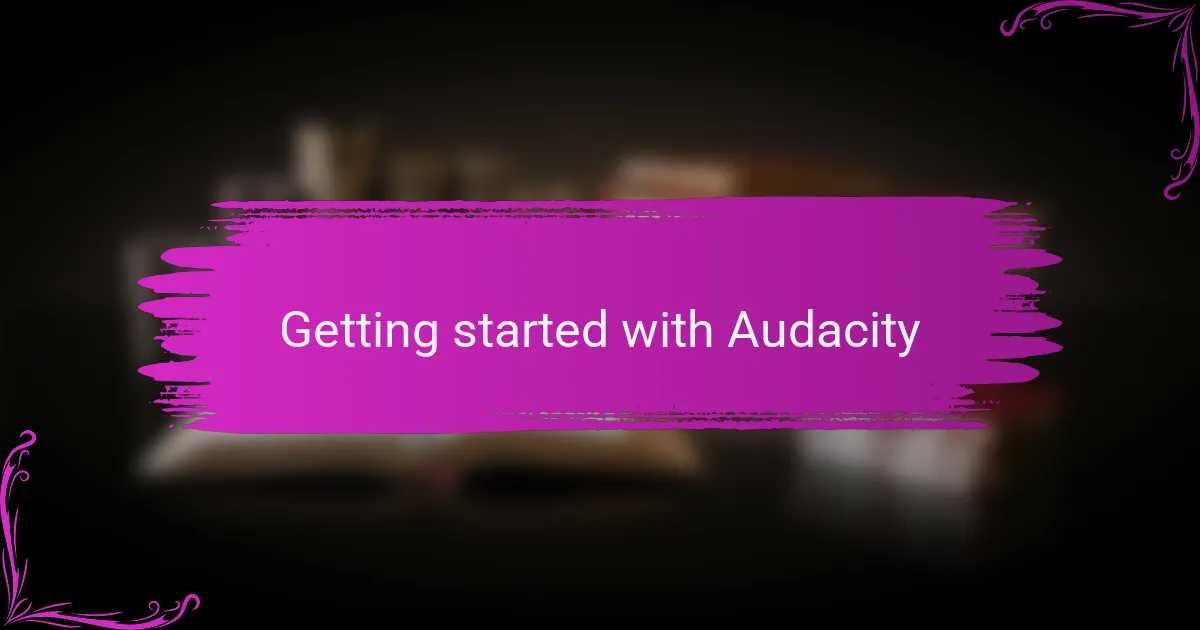
Getting started with Audacity
While getting started with Audacity, I found the initial setup quite straightforward. Downloading the software and installing it on my computer took only a few minutes. Have you ever experienced that satisfying moment when everything just clicks? I remember feeling a surge of excitement as I clicked on the Audacity icon, ready to delve into the world of podcasting.
Once I opened the interface, I was greeted with a simple dashboard that seemed welcoming rather than intimidating. The labels on tools were clear, and I quickly located functions like recording and importing audio files. It reminded me of my first day teaching—so many possibilities ahead! I immediately felt motivated to start creating, knowing I could easily navigate through the options without a steep learning curve.
As I began recording my voice, I realized the importance of properly setting input levels to avoid distortion. I still recall the thrill of hearing my first playback—though a bit rough around the edges, it was undeniably mine. It’s amazing how such a basic action can spark the creative juices, isn’t it? I learned quickly that taking time to familiarize myself with the input settings and monitoring features makes all the difference in producing crisp audio.
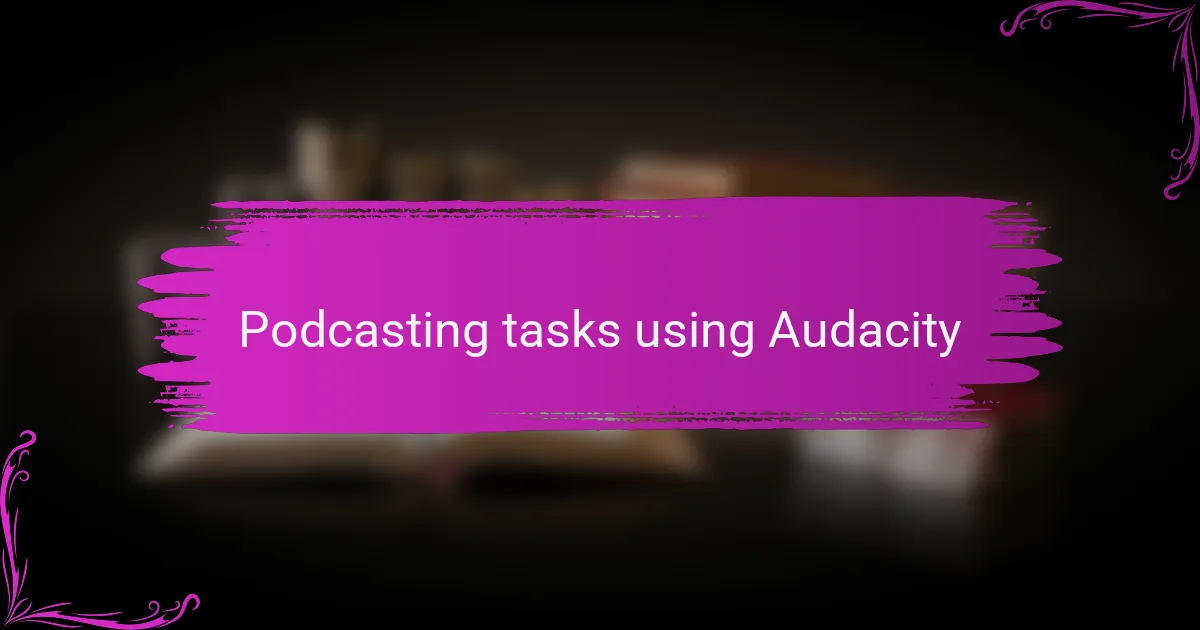
Podcasting tasks using Audacity
When I first dived into podcasting with Audacity, I was both excited and intimidated. The software seemed vast, but once I got the hang of it, I found it incredibly empowering for my creative expression. Tasks like editing interviews and mixing sound felt daunting at first, but with practice, I appreciated how intuitive Audacity could be.
Here are some common podcasting tasks you can accomplish using Audacity:
- Recording: Capture interviews or episodes directly within the application.
- Editing: Cut, copy, and paste segments for polished audio.
- Noise Reduction: Eliminate background noise that can detract from listening.
- Adding Effects: Incorporate effects like reverb or echo to enhance sound quality.
- Mixing Tracks: Layer music and voiceovers seamlessly for a professional touch.
Every time I completed a task, I felt a sense of accomplishment that kept me motivated to keep refining my skills.
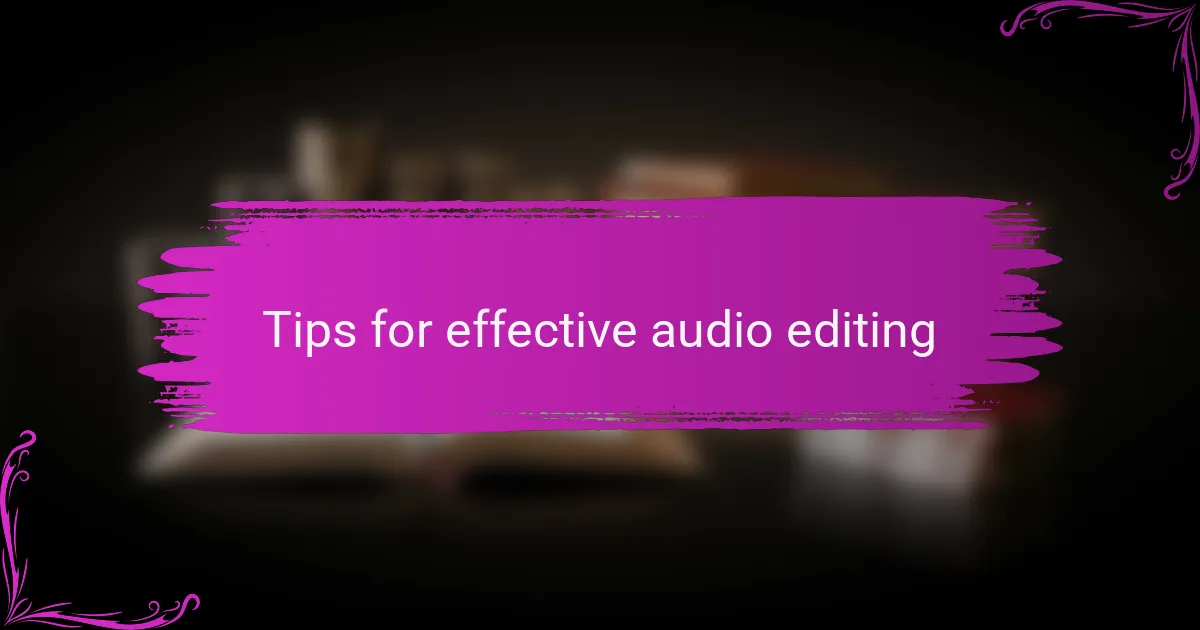
Tips for effective audio editing
When it comes to audio editing in Audacity, I’ve learned that less is often more. It can be tempting to get caught up in the available features, but focusing on clarity and simplicity can truly elevate your podcast. I remember spending hours tweaking audio effects, only to realize that my original sound was often the best.
Another tip I would recommend is to familiarize yourself with keyboard shortcuts. This might seem minor, but it significantly speeds up the editing process. I found that once I started using shortcuts, I could edit an episode in half the time, which gave me more room for creativity in the content itself.
Lastly, always listen back with fresh ears. I like to take a break after editing before doing a final listen. This little practice helps catch mistakes that I might have missed earlier, ensuring the final product is polished and ready for the audience.
| Editing Techniques | Benefits |
|---|---|
| Use of Silence | Enhances clarity and focus on important points |
| Normalization | Ensures consistent volume levels throughout |
| Noise Reduction | Cuts out background noise for a cleaner sound |
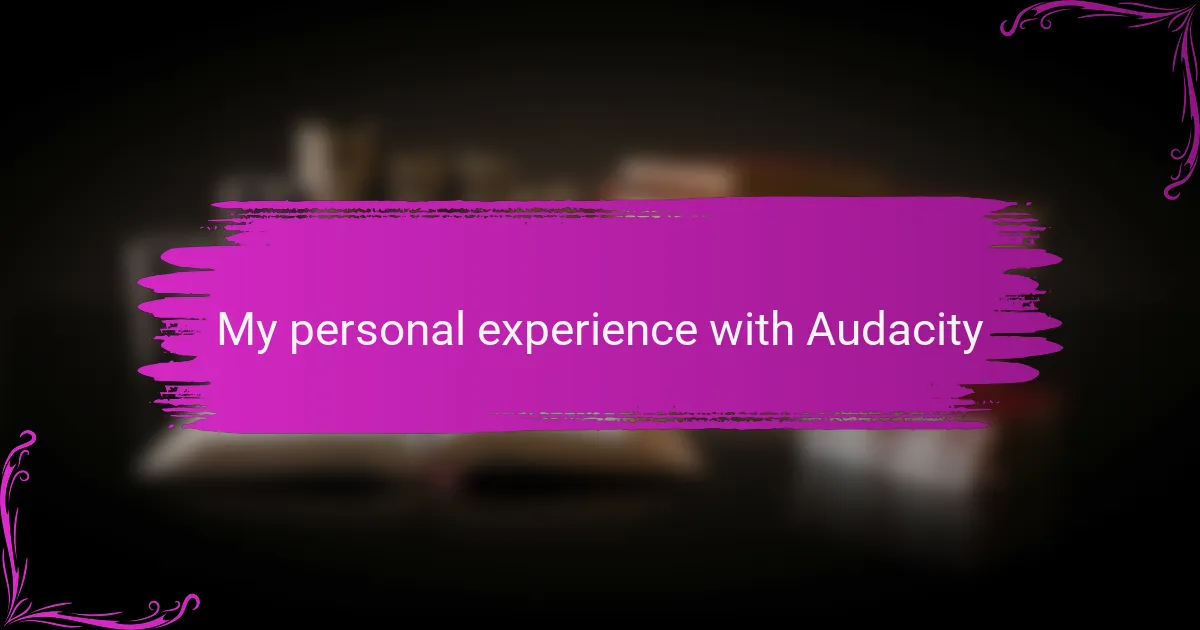
My personal experience with Audacity
My personal experience with Audacity has been quite rewarding. From the moment I downloaded it, I appreciated how user-friendly the interface was for a beginner like me. I remember feeling a mix of excitement and nervousness the first time I hit that record button, but Audacity’s straightforward layout made the process feel seamless.
One of the standout features for me was the ability to edit audio tracks with precision. I vividly recall spending hours fine-tuning my podcast segments, adjusting volumes, and applying effects. It was a labor of love, but each edit brought my vision closer to reality. The satisfaction I felt when I finally finished my first episode was incredibly fulfilling.
In retrospect, I value how Audacity offers both simplicity for newbies and depth for advanced users. The learning curve was manageable, and that’s essential when you’re trying to share your voice. I genuinely believe every aspiring podcaster should give it a try.
| Feature | Audacity |
|---|---|
| User-friendly | Yes, great for beginners |
| Edit tracks | High precision and control |
| Cost | Free and open-source |
